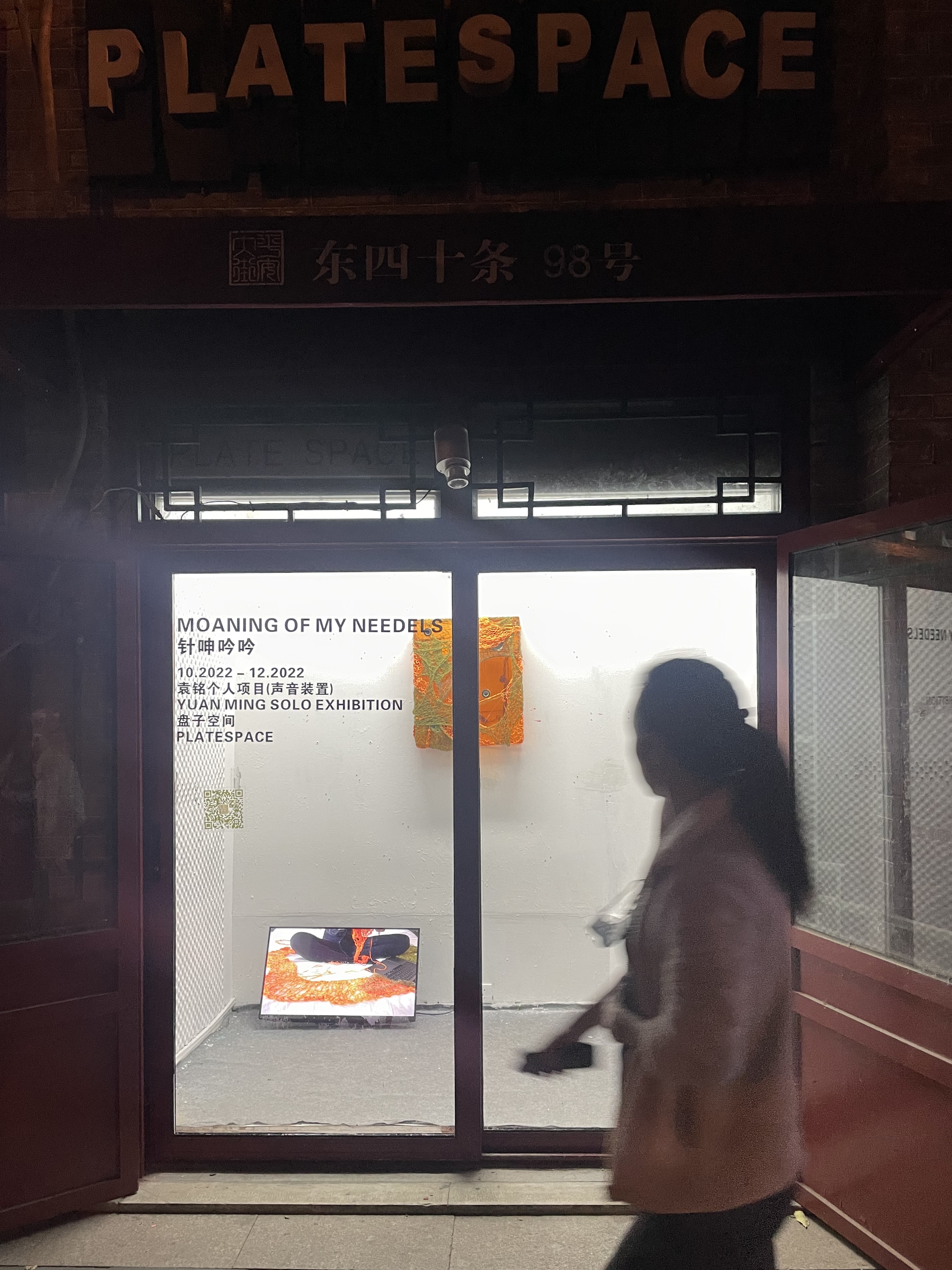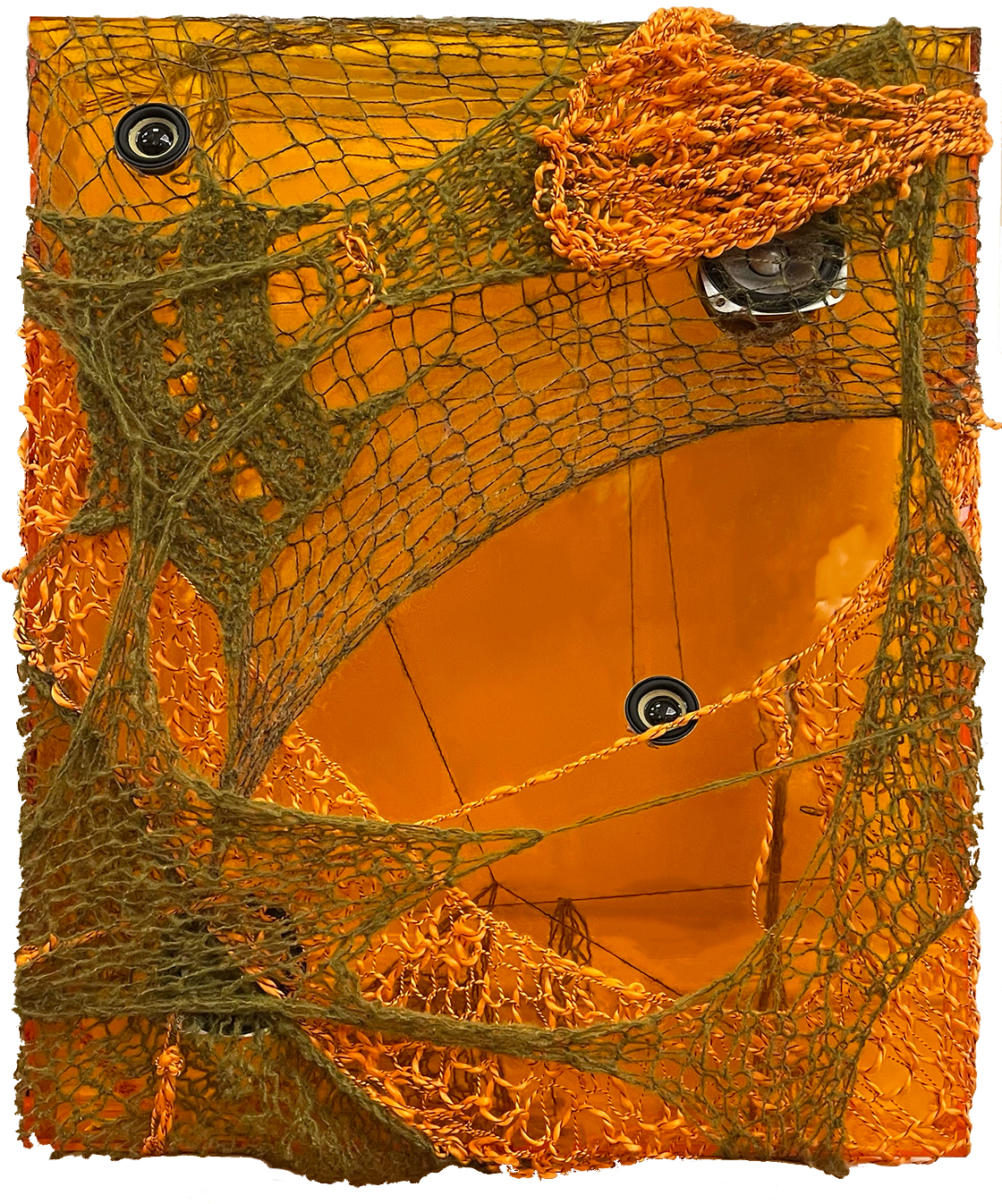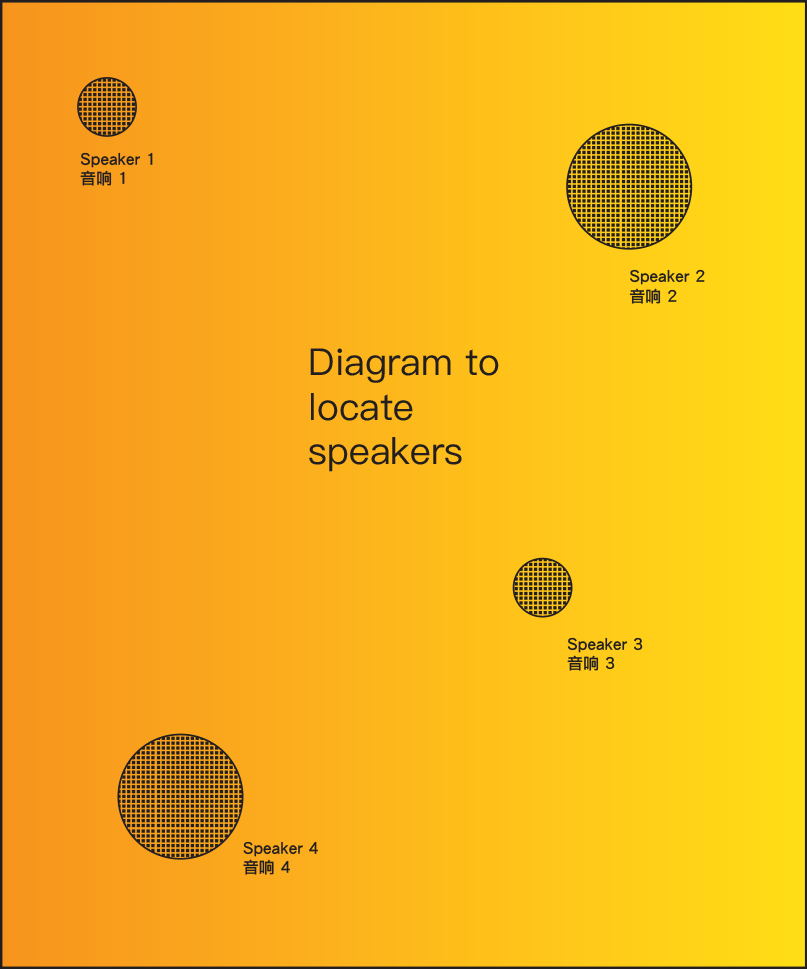

Using metal spinning needles attached to a computer, the artist improvised a seahorse hair braid covering a homemade speaker. In this project, the performance creates the entity of sound and artwork, and at the same time is an important part of the art project.
1
The rhythms and movements of the body during weaving are thus translated into digital signals, arranged on a computer, and broadcast on a 4-channel sound system. Affected by the epidemic, this performance can only be performed at the artist's home, which is the first part of this project. It was recorded through audio and video, and finally presented in a 24-hour cycle on a display screen in the plate space.
The noise of two stainless steel spinning needles bumping/sliding against each other and the friction noise of mohair yarn rubbing against the needles will be recorded by ordinary microphones placed next to the artist's working hands. Meanwhile, the spinning needles are pre-soldered to a cable that connects to an Arduino controller, which translates the motion of the artist's weaving into a series of voltage-strength changes that are sent to a computer, where they are broken down into electrical signals. These signals are transformed through an artist-designed Max Msp patch that controls the content, rhythm and volume of the playing samples.
2
What the artist improvised during the performance was a translucent coat of varying shades of green and orange with different patterns. The knitted fabric is constructed with visually similar colored yarns and different stitching techniques, suggesting that the viewer notices the concepts of repetition and difference, which correspond to human-controllable opportunities and human-uncontrollable (probabilistic quantum physics-like) Chance. The jacket is wrapped around a rectangular acrylic box that houses four speakers. Electronic cables and media players will be hidden in the box, while speakers will be revealed through designed holes in the box.
艺术家用连接到电脑的金属纺针,即兴编织一件覆盖自制音箱的海马毛编织物。 在这个项目中,表演创造了声音和艺术品的实体,同时也是艺术项目的一个重要部分。
一
编织时的身体的韵律和动作由此被翻译成数字信号,在电脑上排列处理后在4声道声音装置中播出。受疫情影响,此表演只能在艺术家家中进行,成为此项目的第一部分,通过录音录像被记录下来,最终在盘子空间用显示屏24小时循环呈现。
两根不锈钢纺针相互碰撞/滑动的噪音以及马海毛纱线摩擦针头的摩擦噪音将被放置在艺术家工作双手旁边的普通麦克风记录下来。同时,纺针被预先焊在连接到 Arduino控制器的电缆上,该控制器将艺术家编织的动作转换为一系列电压强度变化,发送到计算机,分解为电子信号。这些信号通过艺术家设计的Max Msp补丁改造,控制播放样本的内容,韵律和音量。
二
表演中艺术家即兴所织的是一件深浅不一的绿色橙色、不同花纹的半透明外套。针织物结构在视觉上相似颜色的纱线与不同的缝合技术,暗示观者注意到 重复 和 差异 的概念,他们分别对应了人类可控制的机会和人类不可控的(量子物理概率论般的)机会。外套被包裹在一个装有四个扬声器的长方形亚克力盒子上。 电子电缆和媒体播放器将隐藏在盒子中,而扬声器将通过盒子上的设计孔显示出来。

The speakers also loop the sounds collected and processed during the performance. Create a unique soundscape sound environment. The aesthetic premise of the sound samples in the installation is minimalist, futuristic, schematic, and experimental. This aesthetic requirement is to ensure that the concept of "repetition" of human and machine that the work focuses on can be conveyed. In this performance, various different methods of collecting, producing, and processing sound allow for vocal and synthetic samples, human-controlled and machine-controlled rhythms, geometric arrangements, and random collisions and balances of machines. This section can also be presented on the viewer's own electronic device, via an audio file uploaded in a tweet in the space, or to experience the sound language of the work as a whole or individually.
扬声器也会循环播放在表演过程中收集并处理过的声音。制造出一个独特的soundscape声音环境。装置中声音样品的美学前提是简约的、未来主义的、示意性的、实验性的。 这种美学要求是为了确保可以传达作品侧重的人工与机器的“重复”概念。 在此表演中,收集、产生和处理声音的各种不同方法允许人声和合成样本、人控制和机器控制的节奏、几何排列和机器随机的碰撞和平衡。此部分也可在观者自己的电子设备上呈现,通过空间的推文里上传的音频文件,或整体或单独地感受作品的声音语言。

Preview of all speakers playing at once ︎click here
Speaker 1 ︎click here
Speaker 2 ︎click here
Speaker 3 ︎click here
Speaker 4 ︎click here
https://yuanming.bandcamp.com/releases